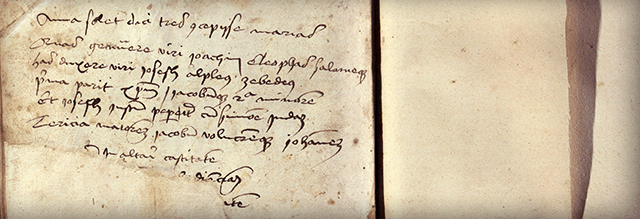Files
Download Full Text (180 KB)
Abstract
The frontispiece image in the PSU codex is in the tradition of ‘the education of the prince,’ a popular choice for early printed works, particularly historical chronicles and similar manuscripts related to ancient times.
A portal with columns provides an entrance into the book, and also encloses and protects its contents. This shape, echoing the triumphal arches of classical antiquity, was a popular motif in renaissance publishing. Along with the king’s crown worn on top of a turban-like head wrap, the columns and arches suggest a connection to classical antiquity. Although most images do not reference an artist, making it nearly impossible to trace the origin of specific woodblocks, this particular image appears in books from at least three other late fifteenth-century publishers.
This image was also used for another highly popular fifteenth-century book: a collection of ancient eastern parables originally written in Sanskrit, and translated into Latin from Hebrew in the twelfth century. The use of identical images in the two texts strongly suggests thematic ties between the two, rendering them worthy of the same opening visual in the minds of their publishers.
Publication Date
2020
Subjects
Incunabula, Illumination, Illustration, History of the Book, History of Printing
Disciplines
Ancient, Medieval, Renaissance and Baroque Art and Architecture | European History | Medieval History
Persistent Identifier
https://archives.pdx.edu/ds/psu/34701
Recommended Citation
Bonilla, Amanda, "The Frontispiece Woodcut in the Fasciculus temporum in Portland State University’s Codex" (2020). Extra-Textual Elements. 2.
https://archives.pdx.edu/ds/psu/34701

Included in
Ancient, Medieval, Renaissance and Baroque Art and Architecture Commons, European History Commons, Medieval History Commons



Comments
This essay is part of a series of research projects written for Professor John Ott's Spring 2020 Medieval History seminar on PSU Library Special Collections' Malleus maleficarum and Fasciculus temporum codex.